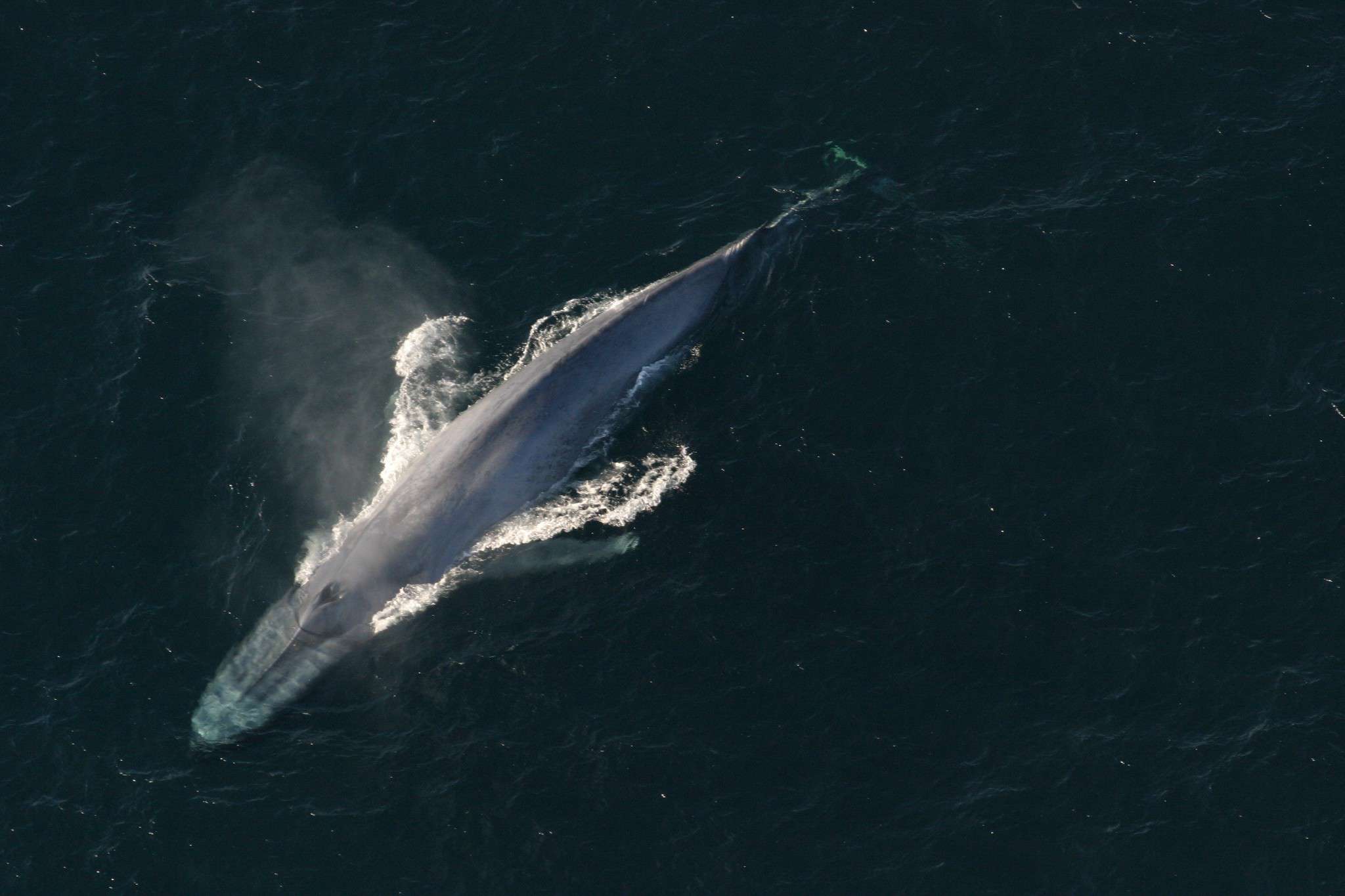If there was ever an animal that could be considered the “King” of the ocean, it would, without a doubt, be the blue whale. These massive creatures aren’t just the largest species of whale alive today; they are the largest creatures to ever exist! Knowing that, it’s hard to imagine anything around today actually preying on these creatures. Incredibly, there are a few creatures on earth that are down to tussle with the largest creatures to ever live. Let’s learn about blue whale predators!
Do blue whales have any predators?

Blue whales only have one natural predator, the killer whale.
©bekirevren/Shutterstock.com
The only real predators for blue whales are large packs of orcas, and they can only prey on juveniles.
Blue whales are known for being the largest animals to ever live on earth. These mammals live in the ocean, eating as much as 16 tons of food each day to support their metabolism. As crazy as it is, these 100-foot behemoths aren’t totally safe when they swim in the oceans of the world. The only natural predators for blue whales are orcas, but humans (or things related to humans) easily top the list when it comes to the number of blue whales killed a year.
Orcas (killer whales)
Orcas, otherwise known as killer whales, are the ocean’s top predators. Often called the “wolf packs of the ocean,” these marine animals are extremely intelligent and powerful, and they hunt as a pack. Currently, orcas are the only natural threat that blue whales face throughout their lives. The vast majority of orca predation is on juvenile whales, however. Blue whale calves are born around 23 feet long and can weigh as much as 6,000 lbs, but a pack of orcas views a baby as prime prey. Incredibly, there are reports of orcas harassing and killing adult blue whales, but the sightings are quite rare.
Current photographic data shows that 3.7% of blue whales in Australia had rake marks from orcas across their sides. Additionally, 42% of pygmy blue whales off the coast of Western Australia had rake marks. This data shows that orcas may attempt to kill a large blue whale but much prefer smaller prey like babies and the smaller subspecies of pygmy blue whales. A few reports show that orcas had killed and eaten a 60-70 foot blue whale near Australia, although we don’t know much about the situation and if the whale was injured or not already.
Humans
Although humans aren’t considered “natural” predators, we definitely kill plenty of blue whales each year. Currently, humans are estimated to kill 1,500 blue whales each year, although the data doesn’t explain if this is due to hunting or boating accidents. Off the west coast of the United States alone, 18 blue whales die after being struck by boats each year.
What kills the most blue whales each year?

Although orcas are the only natural predators of blue whales, humans kill the vast majority of them.
©slowmotiongli/Shutterstock.com
The current data on blue whale deaths isn’t all that great. Knowing that, we are going to have to make some assumptions about the data, but they aren’t large leaps.
Blue whale populations are currently estimated to be between 15,000 to 25,000 individuals, juveniles and adults included. The data surrounding orca predation on blue whales is quite sparse, but it happens rarely. In fact, when it does happen, it often gets a notable amount of news coverage. Even still, the vast majority of blue whale deaths via orca predation are on the baby or juvenile whales and not full-grown individuals. On the other hand, humans kill at least 1,500 mature whales a year, according to americanoceans.org. Knowing that, we can assume that humans kill the most blue whales each year.
Across the board, the hunting of blue whales is banned, although “accidents” still happen each year.
Do humans still hunt blue whales?

Thankfully, blue whale hunting has been banned since the 1960s.
©NOAA Photo Library / CC BY 2.0, Flickr – License
Humans have, without a doubt, been the most aggressive predators of blue whales to ever exist. “Whaling” has been around for thousands of years, and native people all over the world killed whales as a way to provide food and materials for their region. In fact, Norwegians have been hunting whales for at least 4,000 years. The issue of population extermination began much later, however, when the process of whaling was industrialized.
Blue whales were considered impossible to hunt because of their sheer size and weight for a long time. However, when the exploding harpoon gun was invented in 1864, powered by diesel and steam, things changed. Within decades, blue whales were hunted to the tune of up to 35,000 individuals per year.
When groups around the world began to realize populations were drastically dropping (and ethical pressure from activist groups was being applied), the IWF (International Whaling Commission) put a ban on killing blue whales in 1966. The last countries that hunted blue whales ceased around the 1970s.
Today, the intentional hunting of blue whales isn’t widespread, although accidents and incidents still occur.
How many blue whales did humans kill when whaling was legal?
Before the widespread whaling epidemic of the 20th century, there were an estimated 300,000-350,000 blue whales swimming in the world’s oceans. When blue whale hunting hit its peak in 1931, an estimated 30,000 whales were killed a year.
Currently, 10,000-25,000 blue whales live across the world’s oceans. Humans killed roughly 99% of the entire blue whale population within the span of a few decades.
The photo featured at the top of this post is © Atomic Roderick/Shutterstock.com
Thank you for reading! Have some feedback for us? Contact the AZ Animals editorial team.






